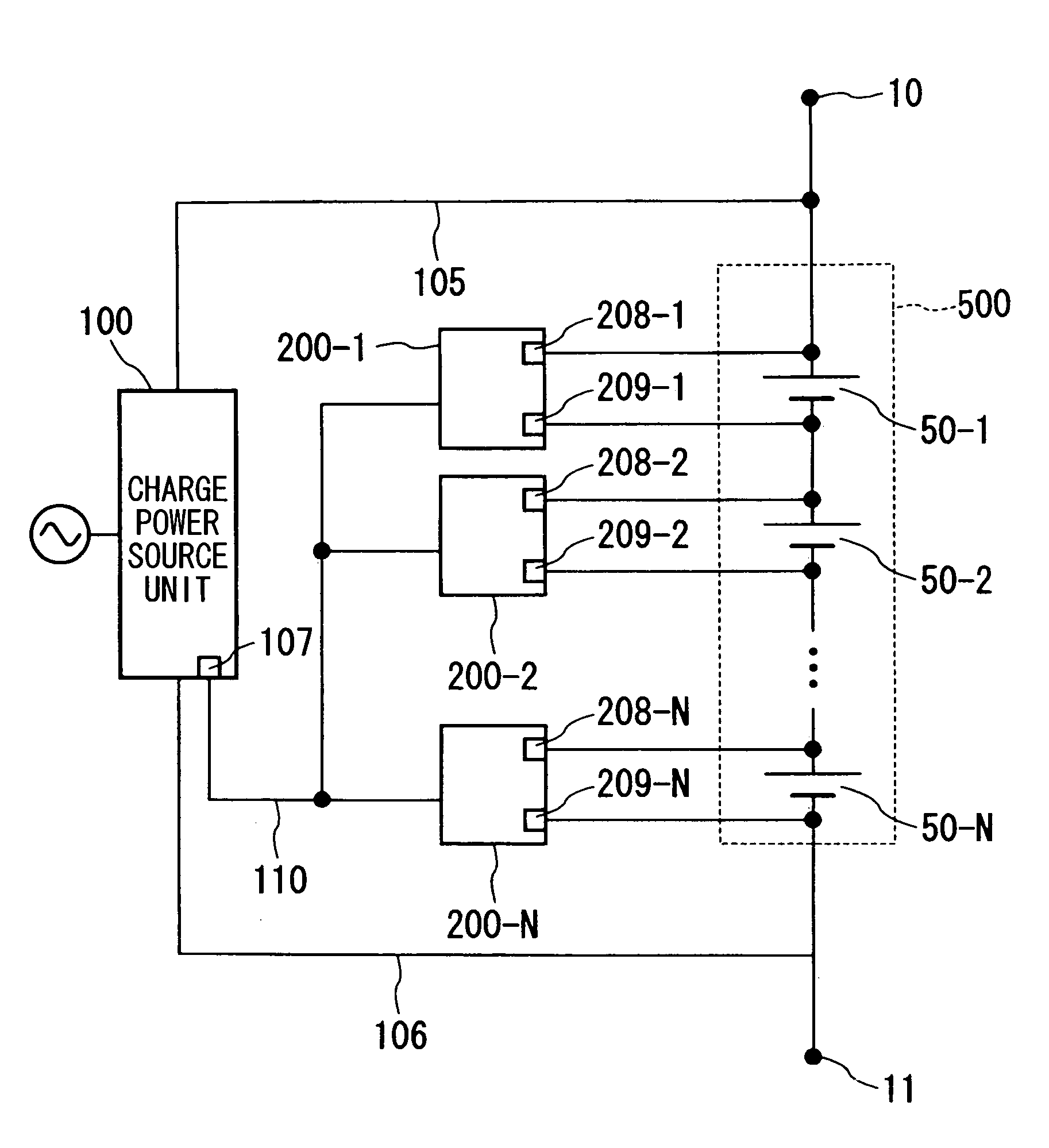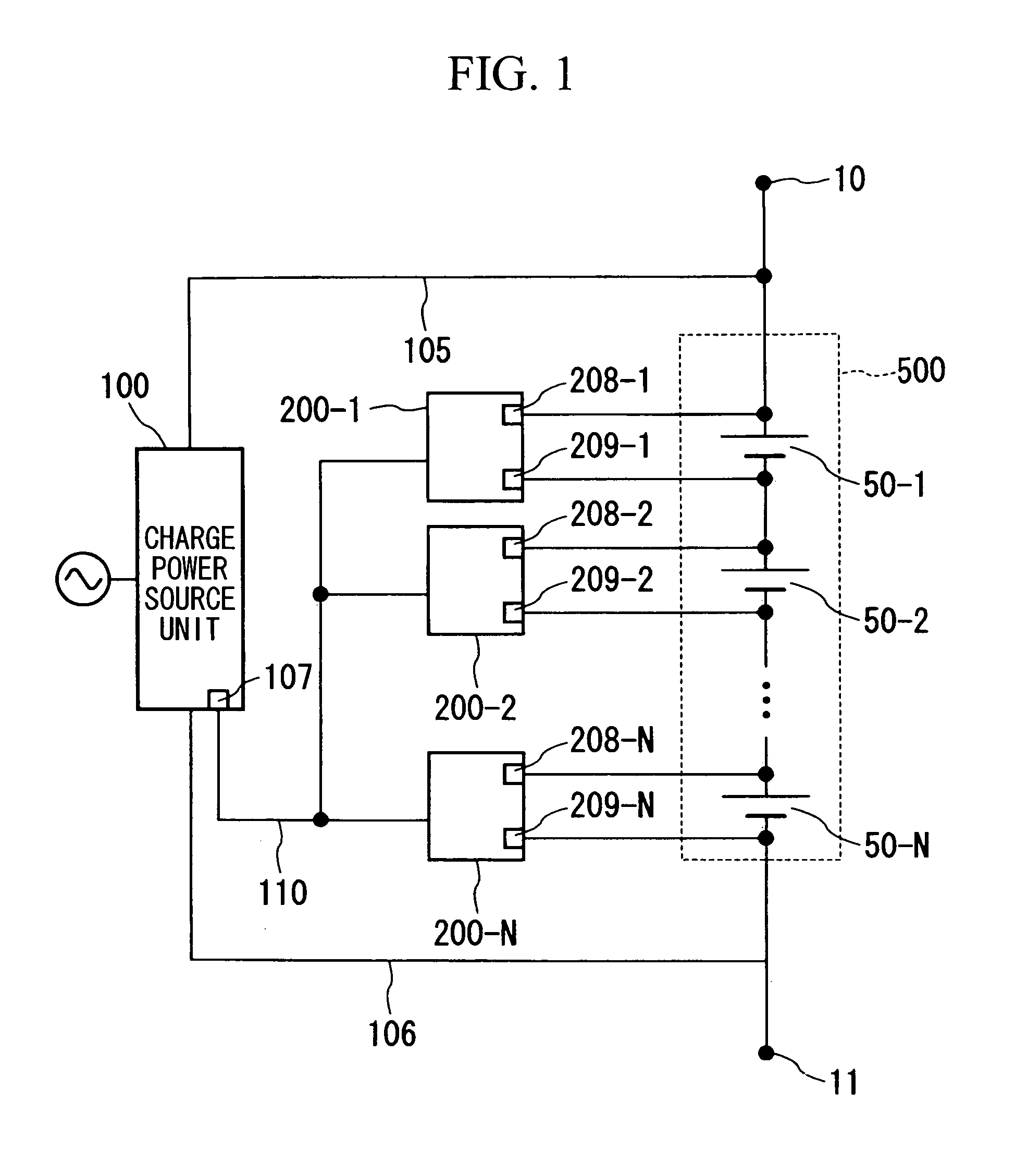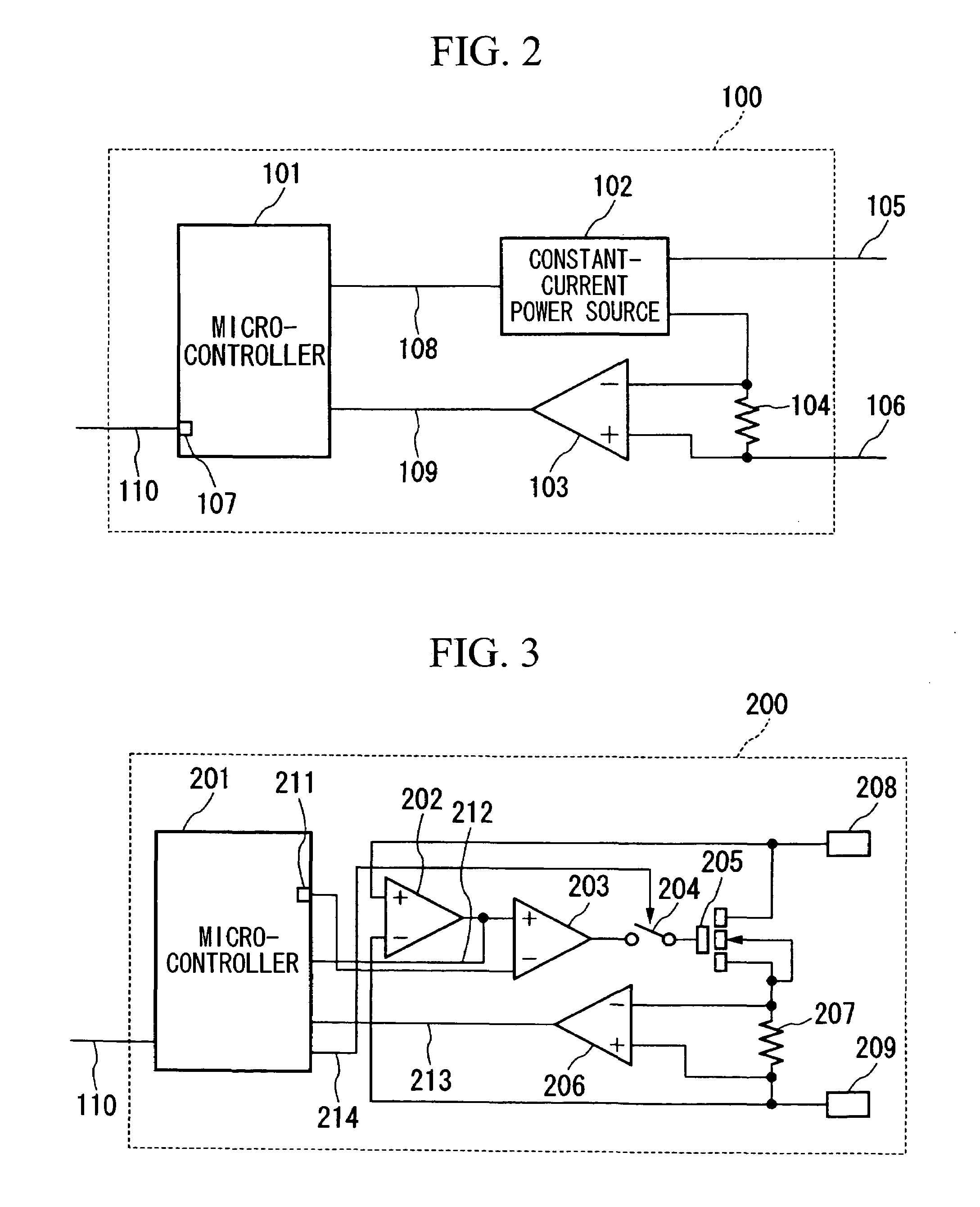Charging device
a charging device and secondary battery technology, applied in the direction of charging equalisation circuit, transportation and packaging, battery arrangement for several simultaneous batteries, etc., can solve the problems of battery performance not being fully realized, battery performance decline, and impeded charging progress, etc., to achieve a well balanced and suppressed voltage variation
- Summary
- Abstract
- Description
- Claims
- Application Information
AI Technical Summary
Benefits of technology
Problems solved by technology
Method used
Image
Examples
Embodiment Construction
[0024]Suitable embodiments of the present invention are described below with reference to drawings. However, the present invention is not limited by any of the following embodiments, and, for example, the constituent elements of these embodiments may be appropriately combined.
[0025]An embodiment of the present invention will be described as follows with reference to drawings. FIG. 1 is a block diagram showing the configuration of a charging device according to one embodiment of the present invention. FIG. 2 is a block diagram showing the configuration of a charge power source unit 100 shown in FIG. 1. FIG. 3 is a block diagram showing the configuration of charge controllers 200-1, 200-2, . . . , and 200-N shown in FIG. 1. FIG. 4 and FIG. 5 are respectively block diagrams showing examples of configuration of a power source system that applies the charging device of the present embodiment. FIG. 4 is a diagram that shows a common power source system for communications that supplies dir...
PUM
 Login to View More
Login to View More Abstract
Description
Claims
Application Information
 Login to View More
Login to View More - R&D
- Intellectual Property
- Life Sciences
- Materials
- Tech Scout
- Unparalleled Data Quality
- Higher Quality Content
- 60% Fewer Hallucinations
Browse by: Latest US Patents, China's latest patents, Technical Efficacy Thesaurus, Application Domain, Technology Topic, Popular Technical Reports.
© 2025 PatSnap. All rights reserved.Legal|Privacy policy|Modern Slavery Act Transparency Statement|Sitemap|About US| Contact US: help@patsnap.com



